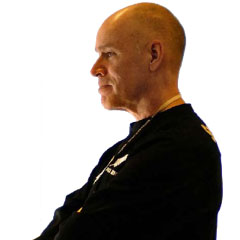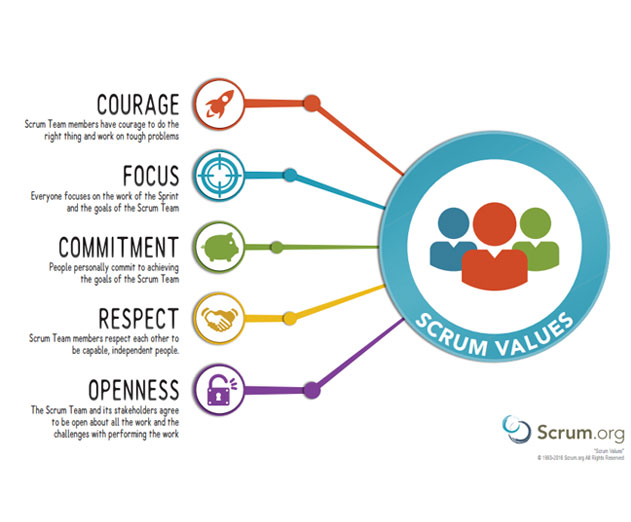Agile
How Do I Build an Agile Organization Part 3
Thursday, July 28, 2016

|
Ken Schwaber |

Remember the angry development VP from Part 1? He had hired a certified Scrum Master and found him inadequate. This VP made the assumption that the CSM certification meant the person was qualified to help his organization. He found out it only meant the person was certified as having attended a Scrum Alliance scrum master class.
In Part 2, I presented the steps I took to create valid certifications the VP and you could have counted on, valid certifications that someone could also use to test and prove their Scrum knowledge
In this edition, Part 3, we’ll look at what is now available to you. You are now equipped to evaluate the validity of the certification if it is one that came from Scrum.org, the foundry from which the assessment was built and improved. These assessments are the result of five years of continuous authoring by myself and many skilled Scrum practitioners. These practitioners have helped organizations like yours.
If the applicant possesses one of the following certifications, you will know both their knowledge and the background of what they had to do to gain the certification.
There are three levels of certification:
Fundamental Certification
Holders of this certification possess knowledge of how to use Scrum to perform their role in the Scrum team. They are ready to join a Scrum team.
To prepare, the person studies the Scrum Guide, takes the equivalent open assessment until a perfect score has been obtained (repeat), and has been part of a Scrum Team. The questions consist of true/false and multiple choice.
To gain these certifications the person must score at least 85% on the assessment.
Advanced Certification
This certification demonstrates that the holder has used Scrum to build software and products and is skilled in doing so. These people can take on leadership roles in Scrum projects and products.
These people usually have over three years of experience to pass the assessment. In practicing Scrum they have to have failed as well as succeeded, and learned from their failures. They usually take the equivalent open assessment to prepare. Case studies are presented in the assessment. The applicant is presented with true/false and multiple choice questions about how to handle the situation.
To gain these certifications the person must score at least 85% on the assessment.
Distinguished Certification
The distinguished certification demonstrates that the holder has extensive practice using Scrum to build software and products in difficult situations. They can serve effectively as coach, trainer, consultant, overall leader of large efforts and Scrum implementations.
This certification is a combination of essay and multiple/choice. The essay questions ask what should be done in common, difficult Scrum development and management situations.
To gain these certifications the person must score at least 85% on the assessment. All Scrum.org coaches and trainers have achieved a score of 95% or higher. Nothing but extensive experience prepares a person for this assessment.
The assessments and corollary certifications are:
PSM I – Fundamental
- Professional Scrum Master I (PSM I): Understands Scrum as described in the Scrum Guide and the concepts of applying Scrum. This assessment has an emphasis on the role of the Scrum Master.
- Professional Product Owner I (PSPO I): Creating value through emergent requirements and empirical focusing of Scrum Teams to meet goals.
- Professional Scrum Developer I (PSD I): Working in a cross-functional Scrum Team of developers (programmers, testers, designers, analysts) using modern development tools and practices to create regular increments of shippable software.
- Scaled Professional Scrum (SPS): Leadership of multiple teams in small to very large development efforts using Nexus and Nexus+ frameworks and exoskeletons.
PSM II – Advanced
- Professional Scrum Master II (PSM II): Knows how to be Scrum Master for one or more Scrum teams, understands the underlying principles of Scrum and can effectively apply Scrum in complex, real-world situations.
- Professional Product Owner II (PSPO II): Can effectively create value for a significantly sized product or system through effective management of Product Backlog and delegation to supporting Product Owners.
PSM III – Distinguished
- Professional Scrum Master III (PSM III): Is your best shot at having Scrum work on a project, program, product, and organization. This level proves that you have a deep understanding of the application of Scrum, Scrum practices and the Scrum Values. You have proven that you have the ability to apply Scrum in a variety of complex team and organizational situations.
Working with a Professional Scrum Practitioner
All of these people have a common understanding of Scrum. They have applied it and you can count on their knowledge and underlying skills. If the applicant does not hold the appropriate certification, make it a requirement that they take this assessment and gain Professional Scrum certification before you hire them.
However, you still must interview these applicants to validate their appropriateness to your context, technologies, and needs. Scrum practitioners in your organization conduct the best interviews.
I’ve worked with many organizations using Scrum. Efforts almost always include culture change, technology and skill improvement, and gradual improvement in value.
The one problem that I shouldn’t encounter is the tower of Babel. Scrum Teams often have different understandings of Scrum roles, artifacts, and events. They don’t even share common wording (Daily Scrum, or Daily Standup, or Daily Meeting, etc.). This creates an unacceptable and unneeded impediment to improvement and results in unproductive arguments and waste.
Ensure that everyone has the appropriate certifications to minimize the problem. If individuals cannot pass the relevant assessments, send them to the related Scrum.org class for further instruction. If they still cannot pass, they should not be part of your Scrum development efforts.
I hope this three-part discussion of how to build an agile organization has helped you. I’ve presented a solution to finding and assigning the right people to Scrum development.
You can take the Scrum Open Assessments which remain free here or learn more about the Scrum.org certification assessments.
Read more: http://scopetrader.com/partner/link/?ref=How Do I
This content is made possible by a guest author, or sponsor; it is not written by and does not necessarily reflect the views of App Developer Magazine's editorial staff.

Become a subscriber of App Developer Magazine for just $5.99 a month and take advantage of all these perks.
MEMBERS GET ACCESS TO
- - Exclusive content from leaders in the industry
- - Q&A articles from industry leaders
- - Tips and tricks from the most successful developers weekly
- - Monthly issues, including all 90+ back-issues since 2012
- - Event discounts and early-bird signups
- - Gain insight from top achievers in the app store
- - Learn what tools to use, what SDK's to use, and more
Subscribe here












Comments